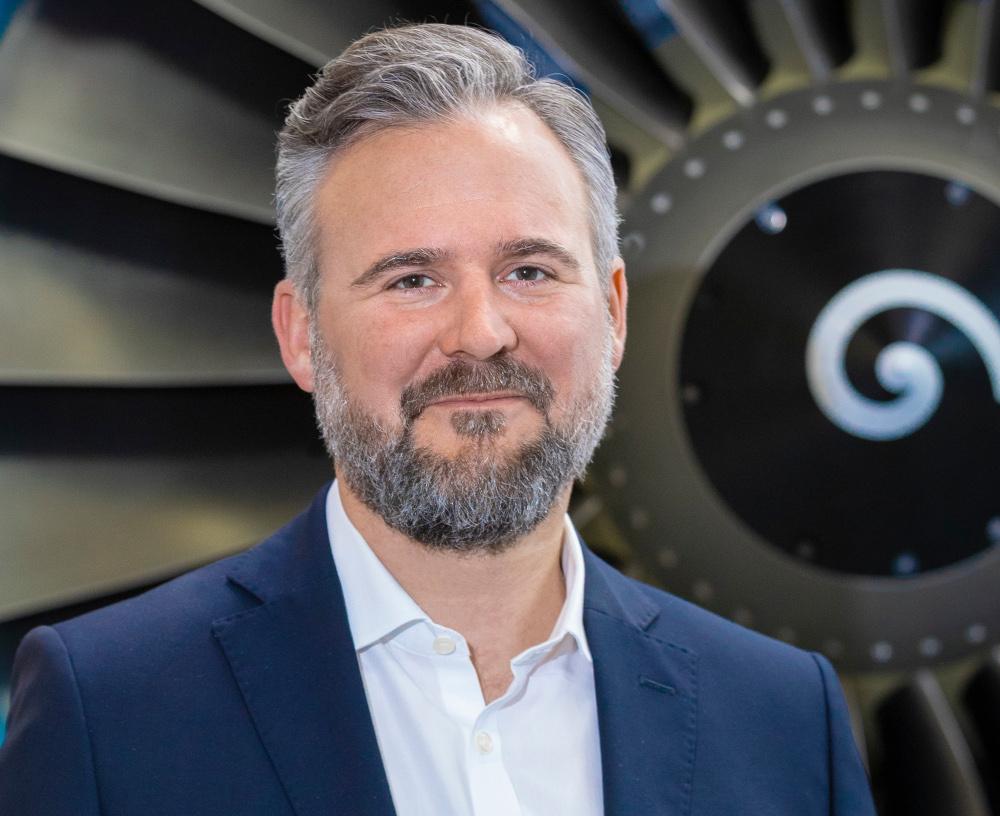
Matthias Düllmann, CEO of SR Technics.
Matthias Düllmann, CEO of Swiss maintenance provider SR Technics, discusses how the company is ramping up operations for new-generation engine types and how it is planning to reduce CO2 emissions across its global network.
It is a mixed picture at present for Europe’s MRO industry. How has SR Technics found the landscape in 2023?
We've been growing significantly. Our plan is to grow by 50% in revenue this year so we see a very strong market and we expect these strong levels of growth to continue over the next few years. The main driver of growth this year has been coming from CFM56 engine maintenance. Stable revenues are also coming from the PW4000 engine, another one of our core engine platforms. These will both be strong segments in 2024. We are also looking ahead to future markets by adding services for both the CFM Leap and Pratt & Whitney geared turbofan (GTF) engine programs. SR Technics has full approval for the -1A and -1B variants and inducted the first -1A in Aug. 2023, so some of this year’s growth is already coming from the Leap program.
What is SR Technics’ timeline for the GTF engine program?
The GTF will become part of the network in 2024 with full overhaul capabilities and we’re also trying to get into more repair services for that engine in the future. We are building up general capability now with heavy maintenance training scheduled as of Jan. 2024. The first induction of a GTF is expected in the second quarter of next year.
How is SR Technics managing capacity for engine repairs given some of the constraints seen globally?
While 50% is an impressive growth, we could actually grow even more if we had more capacity. The market is there and strong and is expected to stay that way despite some of the geopolitical challenges and recession fears the world is currently facing. This is because there’s such a backlog of engine demand, such as for the GTF, and there will be enough work to do. We are well set up for future growth as we did not lay off employees in our engine business due to the short-term work scheme in Switzerland during the pandemic. This helped us to keep our knowledgeable staf. As part of our future growth plans, we plan to hire about 500 people until 2028 with the aim of doubling our revenue in the next five years. Most of these new roles will be working in the MRO shops.
Earlier this year SR Technics formed an alliance with Kuehne+Nagel and Atlas Air targeting the setting of new industry standards for low-carbon engine supply chains. How is this alliance progressing?
It is developing well. We are currently working together to produce tangible results. It’s starting off by measuring to create transparency first between partners and then to identify where in the engine MRO supply chain CO2 can be reduced. The interesting but also complicated thing are scope three emissions, which is much more difficult to measure and to steer. By working with an airline (Atlas Air) and a freight forwarder (Kuehne+Nagel), this kind of alliance in the aviation industry is one of the approaches needed to reach net zero targets by 2050. SR Technics has a strong sustainability focus and now we are mainly concentrated on scope one and scope two emissions. We are targeting the reduction of 15% CO2 by 2025. While that might sound not too challenging, a 15% absolute reduction is very challenging considering our growth targets. But we are on track for achieving this. We will achieve this by making our buildings more energy efficient and also making our test cell in Zurich more efficient as this is one of our biggest CO2 consumptions. Moreover, we are increasing our share of CO2 neutral energy.
SR Technics plans to reactivate a second test cell in Zurich in order to accommodate CFM56, Leap and GTF engines. What is the timeframe for the completion of this?
It’s on track and we expect it to be ready in Q3 next year for the first GTF output. The rebuild is underway currently. It will mostly be used for GTFs at the beginning but will also accommodate both Leap-1A and -1B engines and CFM56-5B and -7b engines. Once operational, it will give us more flexibility on engine testing.
